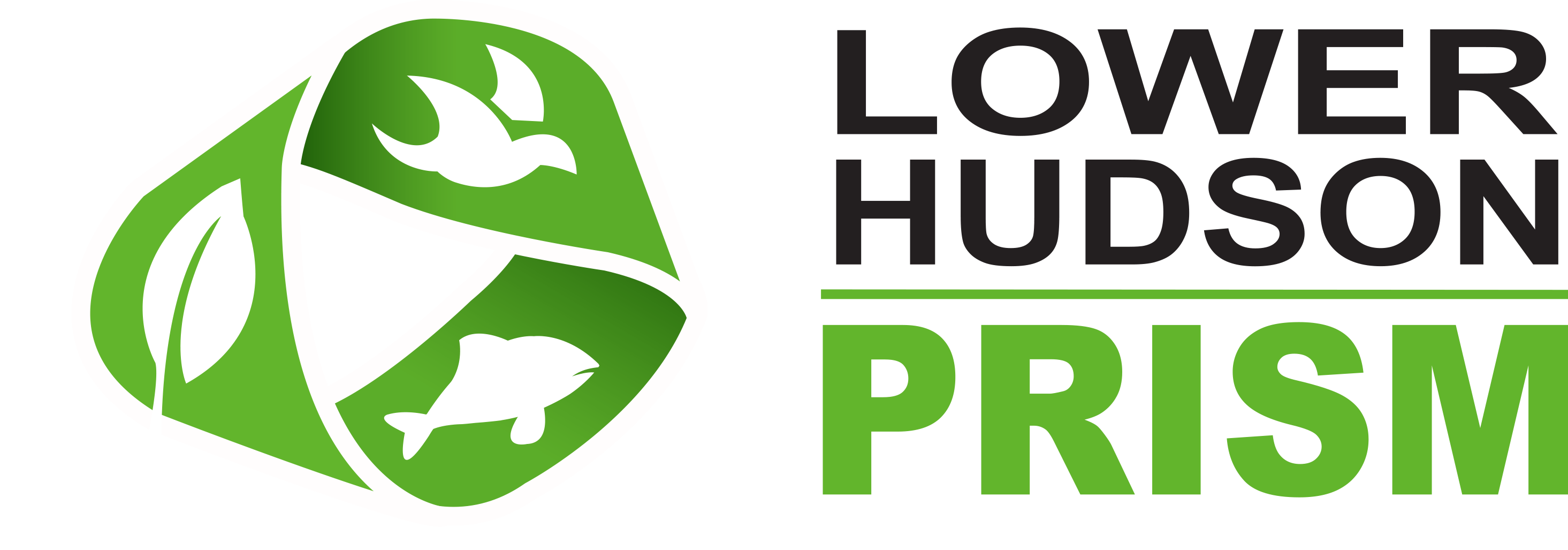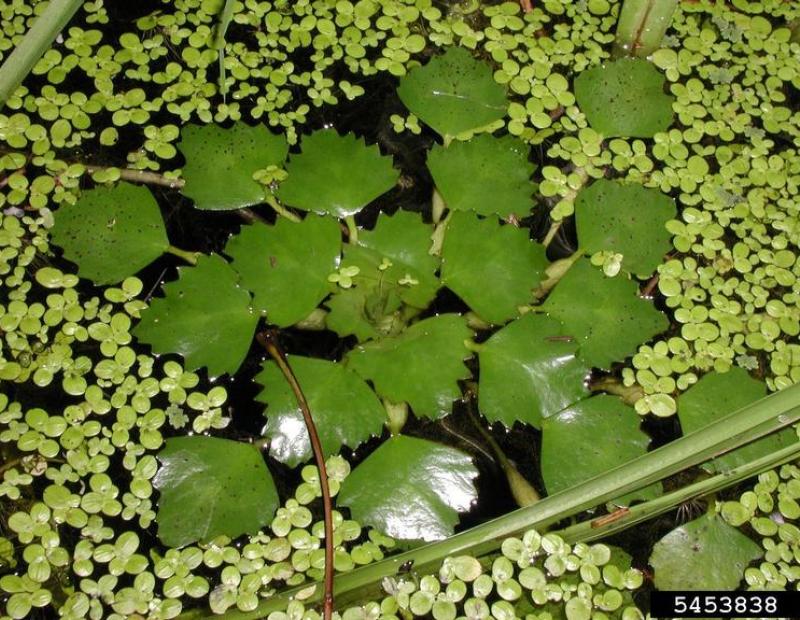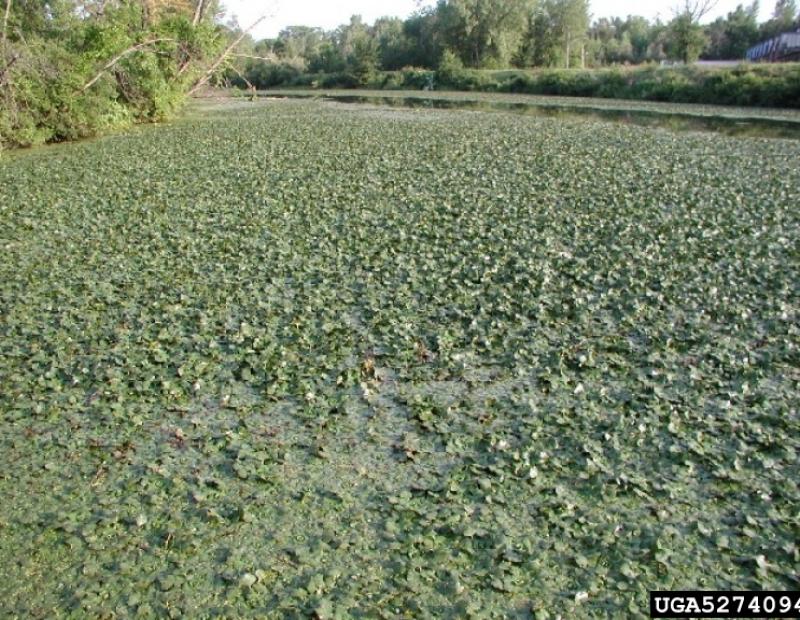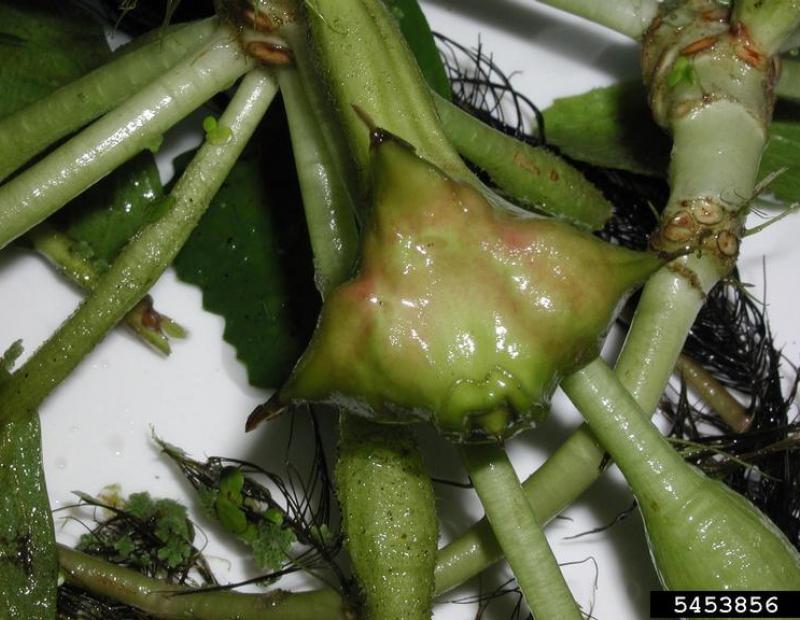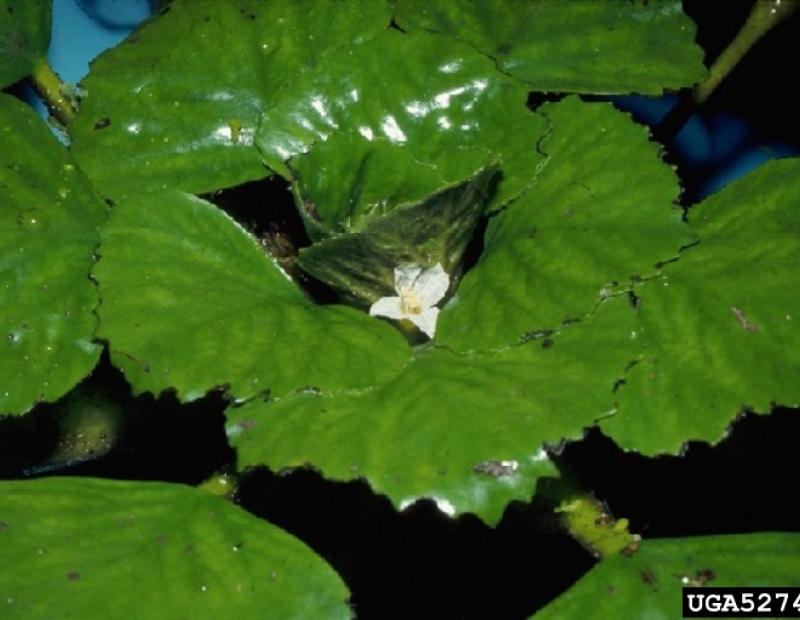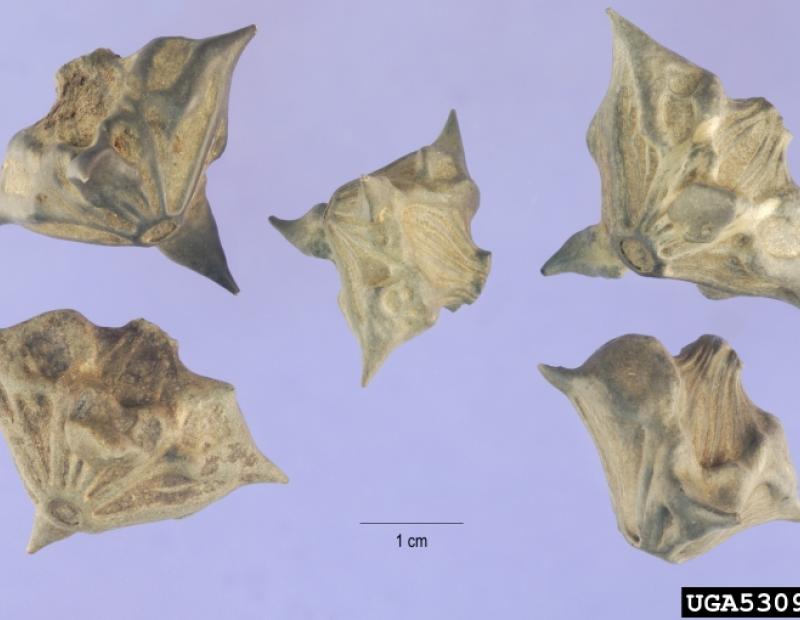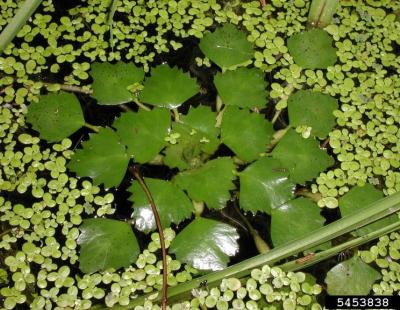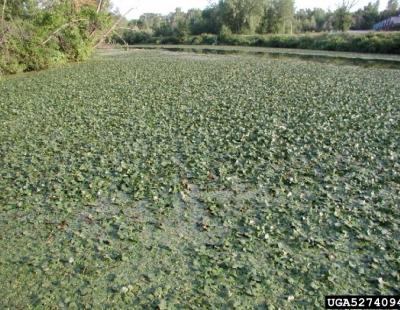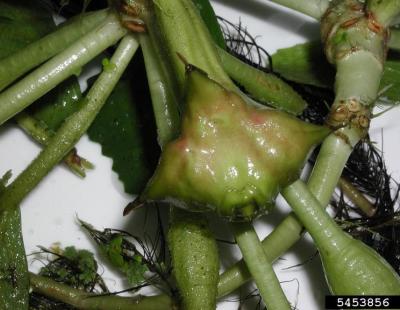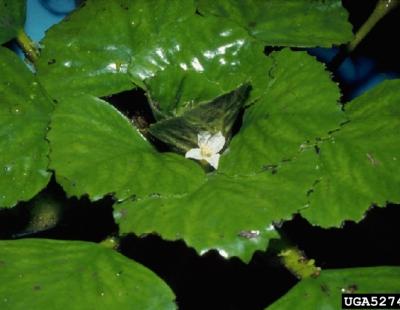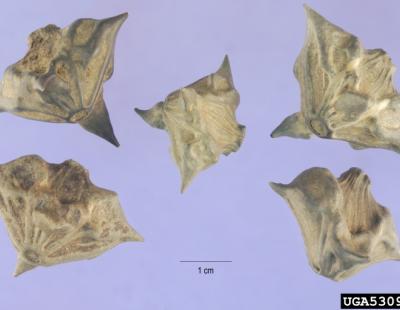Vertical Tabs
An aquatic, annual plant with floating rosettes of leaves, often forming dense mats. Floating leaves have toothed margins and prominent veins on the undersides, and each leaf has a swollen petiole to keep it afloat. The plants are rooted in bottom sediments, and feathery, submerged leaves occur along the stem.
Once established in a water body with suitable conditions, water chestnut can spread very rapidly. Under ideal conditions it forms a thick mat, completely covering the water’s surface and intercepting 95% of sunlight.1 In other conditions it persists at lower densities, along with other aquatic plants. Dense water chestnut beds completely shade out submerged aquatic vegetation (SAV) and reduce dissolved oxygen (DO) to levels lethal to fish and other aquatic organisms.1,3 Low levels of DO may also result in the release of significant amounts of methane, a greenhouse gas, into the atmosphere.4 SAV provides food for ducks and other waterfowl and supports a more diverse fish assemblage through much higher densities of microorganisms, algae, and (at times) macroinvertebrates than water chestnut. Fish found in water chestnut beds are those species tolerant of water pollution, low DO, and high turbidity. Human recreational and commercial use of shallow waters and access to deeper water is limited or prevented where dense water chestnut beds occur.1,3
Nevertheless, water chestnut provides an important ecosystem service – the low DO in water chestnut beds results in the removal of large amounts of inorganic nitrogen to the atmosphere (e.g., water chestnut in the Hudson downstream of Albany removes the equivalent of all of that city’s wastewater nitrogen that enters the river).5 The plants can also accumulate polluting heavy metals.1 Water chestnut supports a high richness and abundance of invertebrates (although different in composition than that supported by SAV) and may enhance total fish production in the Hudson (although favoring only certain species).1,3 Water chestnut beds are used by snapping turtle, blue crab, and various marsh and water birds, and many mammals consume the seeds, including beaver, muskrat, and red squirrel.1
Manual or Mechanical Control
This page focuses on manual best management practices only. Please contact invasives@nynjtc.org with specific questions on chemical or biological control options.
- In July, before any fruits mature: Hand-pull plants, being sure to remove roots, entire stem, and all plant parts (rooted or unattached stems can regrow, and even small rosettes can produce fruits). This is usually best done by canoe or other small boat with cargo space. Use heavy gloves to protect from spiny fruits.7,8
- All plant parts should be piled carefully at an upland site 15 m or more from water to prevent unintentional spread and the return of nutrients from the rotting material.
- To eliminate a bed, this will need to be repeated annually for 5-12 years (to exhaust the seed bank).
- For large, dense beds in large bodies of water, water-chestnut can be removed using large mechanical harvesters, transport barges, and dump trucks, and then composted. This method has worked at some sites to reduce densities enough to continue management by hand harvesting only.7
- Check soon for the availability of a biocontrol option: a leaf beetle (Galerucella birmanica) from water chestnut’s native range is in the final stages of host specificity testing (http://www.nyisri.org/resources/biocontrol/). Classical biocontrol can be a useful component of integrated weed management, but does not always work, and in some cases has adverse impacts on nontarget plants.
Management Goals
- Eliminate small occurrences by annual pulling until seed bank is depleted. This must be done in the first year the plant is noticed, and repeated annually until entirely eliminated.
- Reduce the density of large invasions by annual pulling.
- Prevent introduction into new areas by removal and proper disposal of all plant parts.
- Check boats, nets, and other equipment to prevent dispersal of seeds.
REFERENCES
- Hummel, M., and E. Kiviat. 2004. Review of world literature on water chestnut with implications for management in North America. Journal of Aquatic Plant Management 42:17-28.
- Findlay, S.E.G., D.L. Strayer, S.D. Smith, and N. Curri. 2014. Magnitude and patterns of change in submerged aquatic vegetation of the tidal freshwater Hudson River. Estuaries and Coasts 37:1233–1242.
- Strayer, D.L. 2010. Alien species in fresh waters: Ecological effects, interactions with other stressors, and prospects for the future. Freshwater Biology 55 (Suppl. 1):152-174.
- Pierobon, E., R. Bolpagni, M. Bartoli, and P. Viaroli. 2010. Net primary productivity and seasonal CO2 and CH4 fluxes in a Trapa natans L. meadow. Journal of Limnology 69:225-234.
- Tall, L., N. Caraco, and R. Maranger. 2011. Denitrification hot spots: Dominant role of invasive macrophyte Trapa natans in removing nitrogen from a tidal river. Ecological Applications 21: 3104-3114.
- Groth, A.T., L. Lovett-Doust, and J. Lovett-Doust. 1996. Population density and module demography in Trapa natans (Trapaceae), an annual, clonal aquatic macrophyte. American Journal of Botany 83:1406-1415.
- VDEC (Vermont Department of Environmental Conservation). 2016. Water chestnut harvest program 2015: A report on 2015 water chestnut mechanical and hand harvest activities in Lake Champlain and other waterbodies in Vermont. VDEC, Watershed Management Division, Montpelier, VT. 48 p.
- Chris Doyle (Solitude Lake Management) and Ann Bove (Watershed Management Division, Vermont Department of Environmental Conservation), pers. comm.
